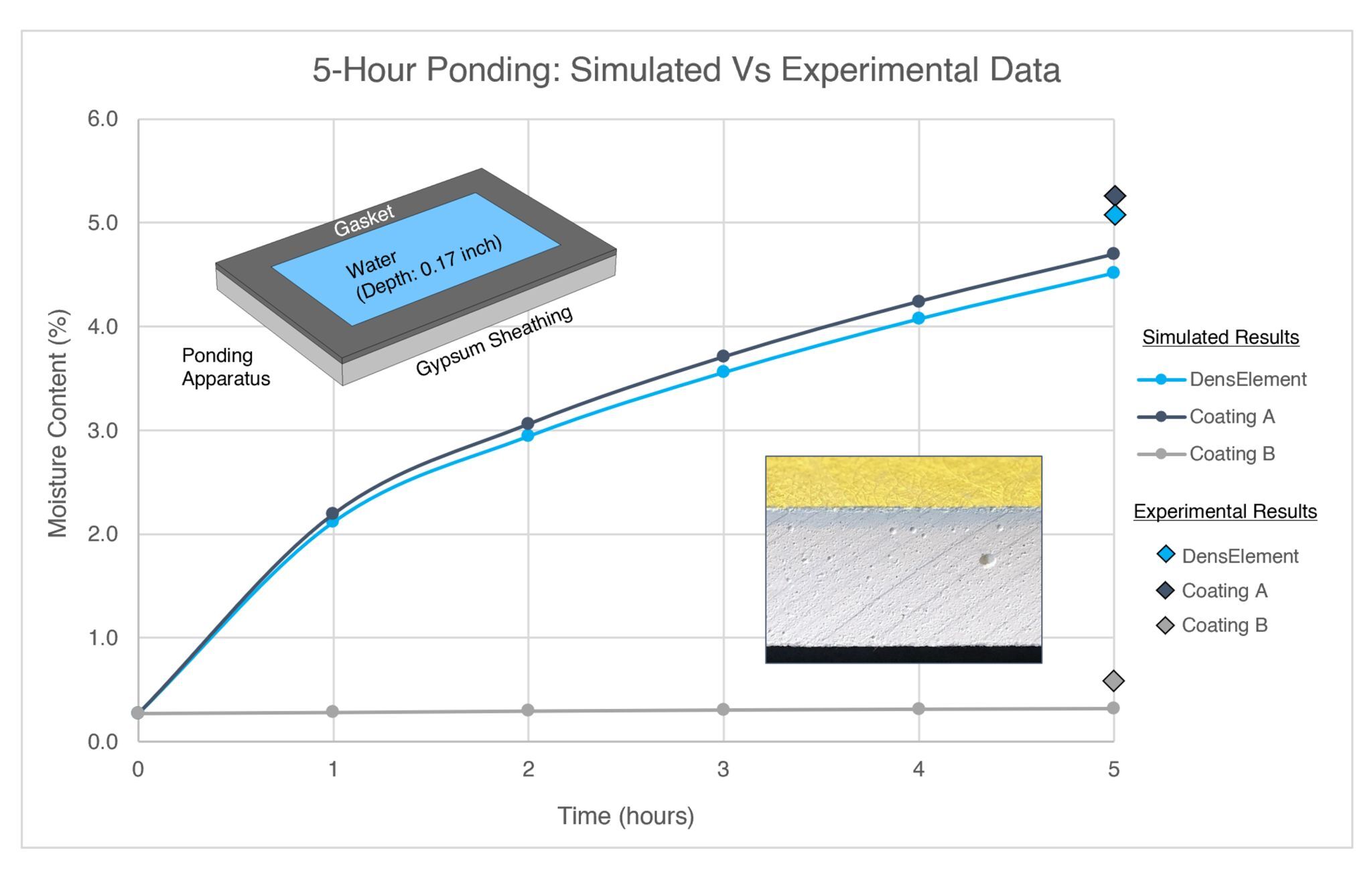Tags: #architecture #buildingdesign #buildingdurability #buildingscience #materialsscience #resilience #waterresistance

Water accumulation by glass-faced gypsum sheathing: the fallacy of water resistance when the substrate is ignored.
In my last post, I described a ponding apparatus that I use to study water absorption by glass-faced gypsum panels. I’m also using this approach to examine how fluid-applied coatings interact with absorptive and adsorptive substrates.
I’ve simulated water accumulation over the course of five hours – my typical test duration. The modeled panel was DensElement, and I used its material properties found in WUFI’s material database. The same panel type was modeled as a coated assembly using one of two thin-mil AWB coatings. Ponded water was modeled as a constant moisture source pertaining to a standing water head of 0.17 inches.
Outcomes for all three conditions compared favorably to experimental results. The key to understanding these findings rests with how certain facers and coatings absorb water and some do not. The difference can be immense: 5% to over 20% by weight. And when simulating with WUFI, it’s a classic garbage in, garbage out – it all depends on the quality of hygric functions, which are typically approximants at best.